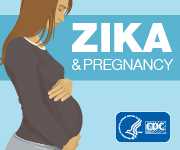United States — Mexico Guidelines and Protocol for Coordination
Technical Guidelines for United States—Mexico Coordination on Public Health Events of Mutual Interest
The Guidelines were developed by the U.S. Department of Health and Human Services (HHS) and the Secretariat of Health of Mexico, and were formally adopted by both countries through a Letter of Intent at the World Health Assembly on May 22, 2012.
The guidelines provide a framework for
- ongoing exchange of binationally relevant epidemiologic information, and
- jointly coordinated responses to public health events that affect both countries.
The framework covers routine events, such as the regular movement of people across the border who require follow-up for tuberculosis, and emergency events, such as response to pandemic influenza.
Operational Protocol for Binational Communication and Coordination on Disease Notifications and Outbreaks
The Guidelines call for additional direction for implementing communication and follow up of binational cases and for identifying and collaborating on binational outbreaks. The “Operational Protocol for U.S.-Mexico Binational Communication and Coordination on Disease Notifications and Outbreaks” fulfills these recommendations. This Operational Protocol was first developed at a July 2015 meeting in Mexico City by members of the U.S.-Mexico Binational Technical Work Group (BTWG).
It is understood that communication and outbreak procedures already exist in local and state jurisdictions on both sides of the U.S-Mexico border. The operational guidance in this Operational Protocol is not intended to replace, duplicate, or change, in any way, either country’s policies, regulations, or standard operating procedures; rather, they reflect the consensus recommendations of the BTWG for binational collaboration.
The purpose of the Operational Protocol is to:
- Facilitate and systematize communications about disease events between all public health entities in the United States and Mexico that need awareness.
- Promote effective collaboration of public health systems of the United States and Mexico on outbreaks or binational cases affecting both countries.
- Provide a recommended list of binationally notifiable conditions
- Provide clear and practical steps for preventing miscommunication and maximizing productive binational collaboration.
- Work within and complement existing communications mechanisms within each state and country to report events.
- Page last reviewed: August 14, 2017
- Page last updated: August 14, 2017
- Content source:




 ShareCompartir
ShareCompartir